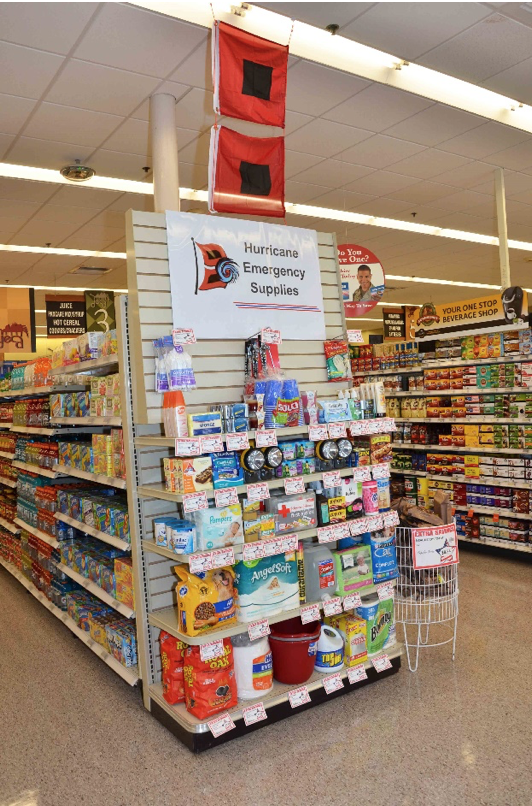Patrons can save on critical supplies
September highlights emergency planning; commissary patrons can save much on their critical supplies
FORT LEE, Va. – Last year was a record-setting year for bad weather in North America with 10 hurricanes – six of which were category 3 or higher – wreaking havoc on the millions of people caught in their path. 
With grocery stores overrun by panic-stricken customers caught in the storms’ melee, many people struggled to get much-needed supplies. National Preparedness Month in September is a reminder of how important it is to plan for emergencies – natural or manmade – before they occur.
“A crisis can occur at any time, and National Preparedness Month reminds us to plan for an emergency before it happens,” said Tracie Russ, DeCA’s director of sales said. “We want to reinforce to the military community that their commissaries and exchanges are benefits that save them money as they prepare their survival kits.”
From April through Oct. 31, DeCA’s severe weather preparedness promotional package is offering various items for those survival kits at reduced prices. This package includes: beef jerky and other assorted meat snacks, soup and chili mixes, canned goods, powdered milk, cereals, batteries, airtight bags, weather-ready flashlights, tape (all-weather, heavy-duty shipping and duct), first-aid kits, lighters, matches, lanterns, candles, hand sanitizer and anti-bacterial wipes. Specific promotional items may vary from store to store.
The theme for this year’s National Preparedness Month is “Disasters Happen. Prepare Now. Learn How.” The month is separated into four activities: Sept. 1-8 – make and practice your plan; Sept. 9-15 – learn life-saving skills; Sept. 16-22 – check your insurance coverage; and Sept. 23-29 – save for an emergency.
Generally, emergency preparedness officials suggest having a disaster supply kit that includes the following items:
- Water – at least one gallon daily, per person (three-day supply for evacuation, two-week supply for home)
- Nonperishable foods – canned meats, fruits, vegetables, dried fruits, nuts, raisins, cereal, crackers, cookies, energy bars, granola, peanut butter, and foods for infants and the elderly (three-day supply for evacuation, two-week supply for home)
- Paper goods – writing paper, paper plates, paper towels and toilet paper
- Cooking items – pots, pans, baking sheets, cooking utensils, charcoal, a grill and a manual can opener
- First-aid kit – including bandages, medicines and prescription medications
- Cleaning materials – bleach, sanitizing spray, and hand and laundry soap
- Specialty foods – diet and low-calorie foods and drinks
- Toiletries – personal hygiene items and moisture wipes
- Pet care items – food, water, muzzle, leash, carrier, medications, medical records, and identification and immunization tags
- Lighting accessories – flashlight, batteries, candles and matches
- Battery-powered or hand-crank radio (NOAA weather radio, if possible)
- Duct tape, scissors
- Multipurpose tool
- Copies of personal documents (medication list and pertinent medical information, proof of address, deed/lease to home, passports, birth certificates and insurance policies)
- Cell phone with chargers
- Family and emergency contact information
- Extra cash
- Emergency blanket
- Maps of the area
- Blankets or sleeping bags
Commissary patrons can access a variety of disaster preparedness resources.
For more information about National Preparedness Month, go to Ready.gov where there are also links to more resources such as the Hurricane Seasonal Preparedness Digital Toolkit. Military families can also find information on emergency procedures specific to their service.
Note: To watch a video on DeCA’s YouTube page about saving money on the purchase of emergency supplies at your commissary, go to https://www.youtube.com/watch?v=fcKp3cQakMw.
-- Kevin L. Robinson, Public Affairs Specialist
